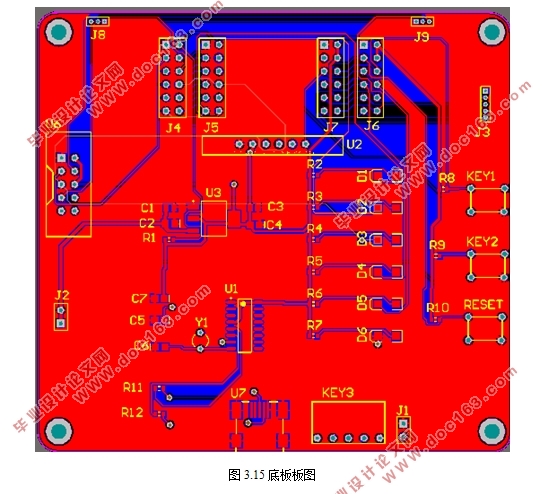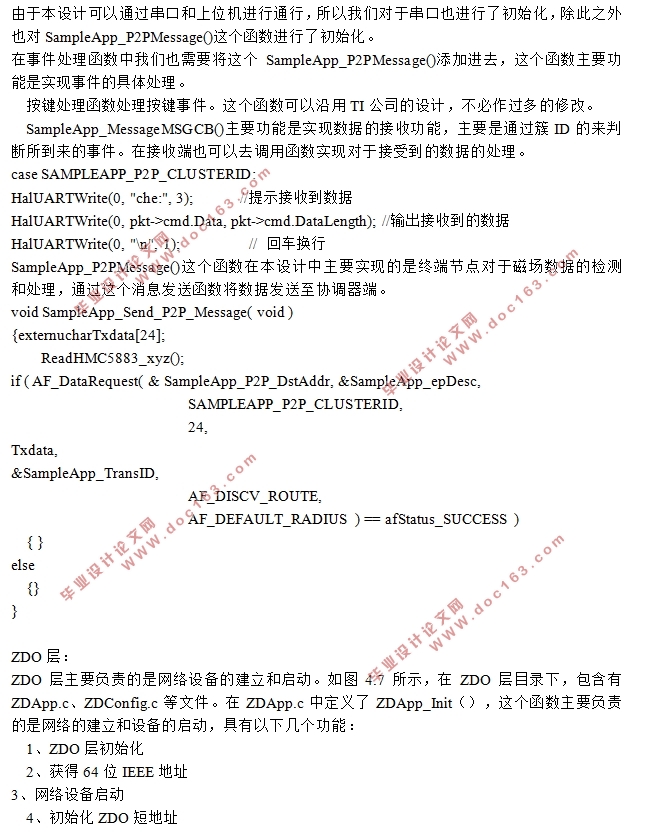基于ZigBee和磁阻传感器的车位检测系统设计

1.无需注册登录,支付后按照提示操作即可获取该资料.
2.资料以网页介绍的为准,下载后不会有水印.资料仅供学习参考之用.
密 惠 保
基于ZigBee和磁阻传感器的车位检测系统设计(论文13200字)
摘要:本设计从车位检测的角度,比较当前一些比较成熟的车位检测手段存在着不稳定、造价高、应用场所受限等问题,设计出了一款基于磁阻传感器的车位检测器。主要用于解决停车场的停车问题。本设计通过传感器检测车位周围磁场发生的改变判断车位存在与否,通过ZigBee组网技术将检测数据无线传输,可以在停车场的入口处实现停车诱导。在实际的停车场应用中一定的积极意义。
关键词:ZigBee技术 磁阻传感器 车位检测
Parking space detection system based on ZigBeeand magnetic Sensor
Abstract:From the point of view of parking space detection ,compared with some of the mature parking space detection means which have the problem of instability,high cost and limited application, this paper comes up with a parking detectors based on magnetic sensor. It is mainly used to solve the parking lot parking problem.This design checks the changes in the magnetic fieldaround the parking spaces toJudge the presence or absence of parking spaces through the measurement of the sensor. Ittransmits the data by using the ZigBee networking technology. It [来源:http://www.think58.com]
can achieve the function of parking space detection at the entrance to the parking lot.Ithas acertain positive significance in practical application of the parking lot.
Key words:ZigBeemagnetic Sensor Parking space detection
[资料来源:THINK58.com]


目录
一、引言 5
1.1选题的目的和意义 5
1.2国内外现状 5
1.3本文的主要研究 6
二、车位检测技术和无线网络 7
2.1磁阻传感器车位检测原理: 7
2.1.1磁阻效应: 7
2.1.2各向异性磁阻传感器检测原理: 8
2.2 ZigBee技术 8
2.2.1 ZigBee技术特点 8
2.2.2 ZigBee网络结构 9
三、检测系统的硬件电路设计 11 [来源:http://www.think58.com]
3.1 微处理器模块 12
3.1.1晶振电路的设计 13
3.1.2电源去耦和旁路电路设计 13
3.1.3射频电路的设计 14
3.2电源模块 14
3.3传感器模块 15
3.4串口通信模块 17
3.5 JTAG调试接口 17
3.6 oled显示模块 18
3.7按键和指示灯的设计 18
3.8硬件电路pcb设计 19
四、车位检测系统的软件设计 20
4.1开发环境 20
4.2 I2C总线驱动程序设计: 21
4.3 ZigBee组网技术 23
4.3.1 Z-Stack协议栈结构: 23
4.3.2数据的发送和接收 28
4.3.3串口通信: 29
4.4 车位检测算法 30
五、系统调试 30
5.1系统的硬件调试 30
5.2系统的软件调试 31
5.3系统测试 31
六、总结和展望 35
参考文献 37
致谢 38 [版权所有:http://think58.com]
